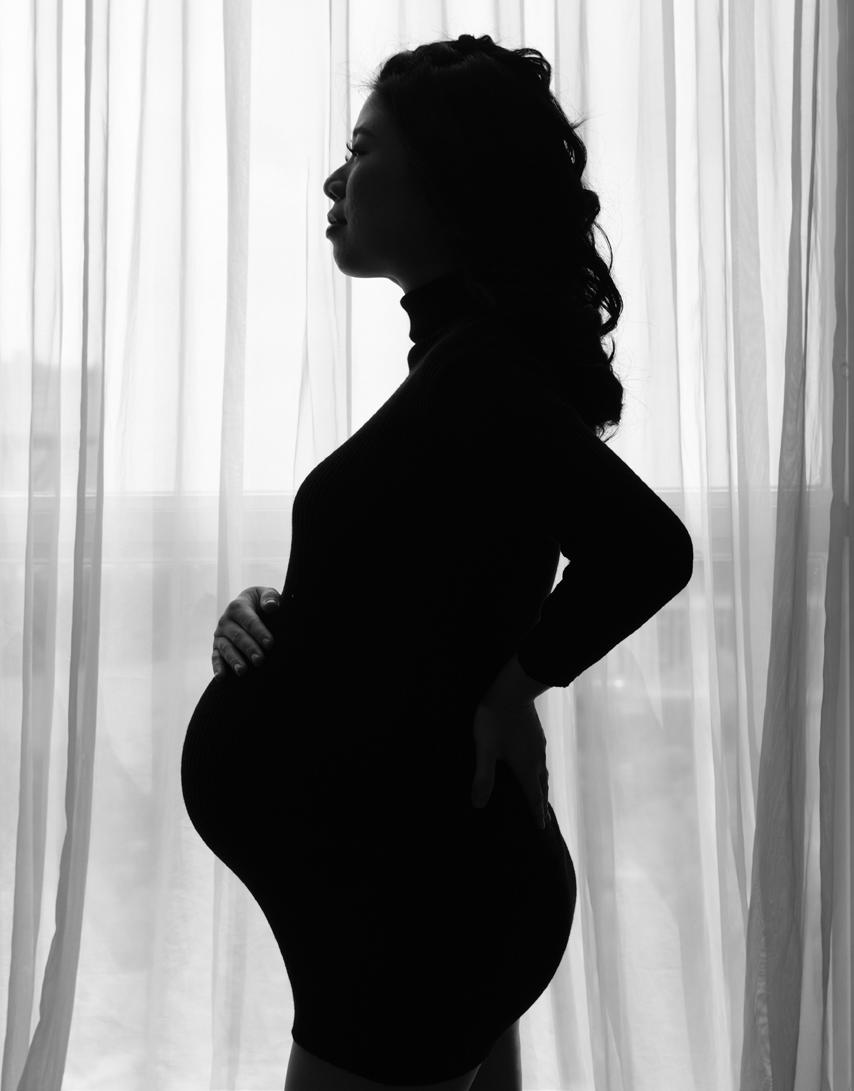
3 minute read
Race a Factor in Pregnancy Risk
Women of color face the greatest risk of maternal mortality in the U.S. The maternal death ratio for Black women is 37.1 per 100,000 pregnancies. That is:
3 times the ratio for white women (13.4)
3.5 times the ratio for Hispanic women (11.6)
Among women over the age of 30, pregnancy-related deaths are:
4 to 5 times more common among Black and American Indian and Alaska Native women than white women.
Hemorrhage is the leading cause of maternal-related death among Asian Pacific Islanders, American Indians and Alaska Natives, occurring at twice the rate than for white and Black women.
Cardiomyopathy accounts for 1 in 7 deaths among Black, American Indian and Alaska Native pregnant women.
Sources: The Centers for Disease Control and Prevention, The Commonwealth Fund tions, including hemorrhage, preeclampsia, sepsis and cesarean section.
Such a comprehensive guide is critical, Dr. Morton says, because each maternal health crisis requires a specific response. The toolkits give health care professionals guidance to make the best choices for their patients in emergency situations. “It’s a free, opensource solution designed to provide consistent quality of care to women across the nation,” she says.
But being trained to identify maternal health risks isn’t enough. Medical professionals also need training on how to overcome their own unconscious bias, says Dr. Lily Higgins, market chief medical officer for Keystone First, part of the AmeriHealth Caritas Family of Companies, and AmeriHealth Caritas Pennsylvania.
“We have to provide more training on implicit bias to providers and their staff, and to encourage providers to hire from the local community,” she says.
Having a diverse and inclusive staff can help make all patients feel welcomed, giving them the confidence that their needs will be addressed.
Improve Outreach Efforts
Along with more consistent prenatal and postnatal care, most experts believe there’s a need for programs designed to holistically support women throughout their pregnancy and postpartum experience. For instance, there’s a growing movement among community groups to ensure women have access to doulas, who provide emotional support and advocacy, and to midwives, who can provide clinical pregnancy care at home or in a medical facility.

The Birth Sisters program at Boston Medical Center, for example, provides a doula service to support lowincome women who are at risk of complications during pregnancy, childbirth and the postpartum period. “The doulas, who are from the communities they serve, help women navigate the health care system, and provide education and knowledge,” Dr. Declercq says.
The doulas and midwives provide care every step of the way, educating women on their prenatal health needs, helping them through childbirth and assisting them at home after birth. The program has led to a decrease in C-section deliveries, which often lead to complications, and to an increase in the number of breastfeeding mothers.
It’s also important for Medicaid providers to proactively meet their members’ needs through outreach efforts, says Dr. Higgins. Her group’s Bright Start® program hosts baby showers that target mothers who live in at-risk communities and provides health and wellness education, support and incentives for women to access care throughout their pregnancies. The program sends reminders about appointments, offers access to transportation, and delivers gift cards and a crib to members who attend most of their prenatal appointments. “The program is designed to encourage members to seek care and to follow prenatal protocols,” Dr. Higgins says.
If a woman stops going to appointments, the Bright Start team reaches out directly to help her get back on track with her care. “It’s a way for us to be sure moms have the care they need,” Dr. Higgins says.
Through related programs, Dr. Higgins’ group helps members in low-income communities work with dieticians to provide kitchen tools and teach women healthy shopping and cooking techniques. The programs also provide women with blood pressure cuffs to monitor heart health—a simple and costeffective way to help detect cardiovascular issues or preeclampsia before they create serious risks, Dr. Higgins says. “If they see their blood pressure increasing, they know to seek care.”
These community programs help women get care that might otherwise elude them, particularly among African Americans. “It’s a population where we have seen the highest rates of improvement,” Dr. Higgins says.
Expand Postpartum Coverage
Postpartum care is critical in preventing maternal deaths. “Most people think of maternal mortality as an event that happens during childbirth,” Dr. Declercq says.

Mothers also need monitoring in the year following birth. Only 17% of maternal deaths occur the day of delivery. More than half (52%) of deaths occur during the 12 months postpartum, according to The Commonwealth Fund. Of those deaths, 19% occur one to six days postpartum, 21% occur between one and six weeks postpartum and 12% occur during the remainder of the year.
But there’s a huge gap: Medicaid, which covers 45% of U.S. births and 66% of births to Black mothers, generally cuts maternal postpartum coverage after 60 days. “A significant number of women don’t have the resources to get preventive care after those 60 days,” Dr. Declercq says.
One stopgap to provide care is a provision in the American Rescue Plan Act of 2021 to give states the option to offer a Postpartum Extension of Coverage to 12 months via a state plan amendment. The extension began April 1, 2022.
The Congressional Budget Office estimates the extended coverage will cost the federal government


